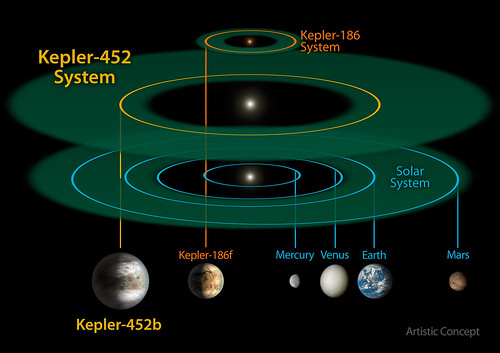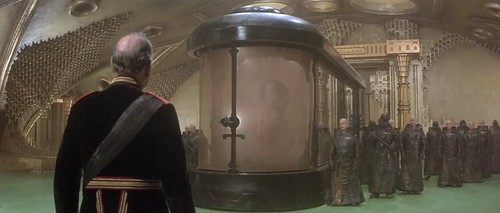Road Trip: Kepler 452b

NASA’s timed announcement yesterday got quite the bump from social media. It’s only one of 1,030 exoplanets, so let’s not get too excited.
NASA’s Kepler mission has confirmed the first near-Earth-size planet in the “habitable zone” around a sun-like star. This discovery and the introduction of 11 other new small habitable zone candidate planets mark another milestone in the journey to finding another “Earth.”
The newly discovered Kepler-452b is the smallest planet to date discovered orbiting in the habitable zone — the area around a star where liquid water could pool on the surface of an orbiting planet — of a G2-type star, like our sun. The confirmation of Kepler-452b brings the total number of confirmed planets to 1,030.
“On the 20th anniversary year of the discovery that proved other suns host planets, the Kepler exoplanet explorer has discovered a planet and star which most closely resemble the Earth and our Sun,” said John Grunsfeld, associate administrator of NASA’s Science Mission Directorate at the agency’s headquarters in Washington. “This exciting result brings us one step closer to finding an Earth 2.0.”
It’s also worth noting this planet is 1,400 light years away. Pluto, for comparison, is 4 light hours away. That’s why it took 4+ hours to send commands to the New Horizons spacecraft. So if we send a signal to Kepler 452b, it would take 1,400 years to get there.
To get to Kepler 452b at the same rate it took New Horizons to get to Pluto (10 years), it would take us approximately 30 million years. Ain’t nobody got time for that! The only way we could make this kind of trip is to be able to “fold space” or change dimensions. Heim Quantum Theory may help us get there by changing dimensions. Fascinating.

Tags: earth 2.0, exoplanets, heim quantum theory, kepler, kepler 452b, nasa